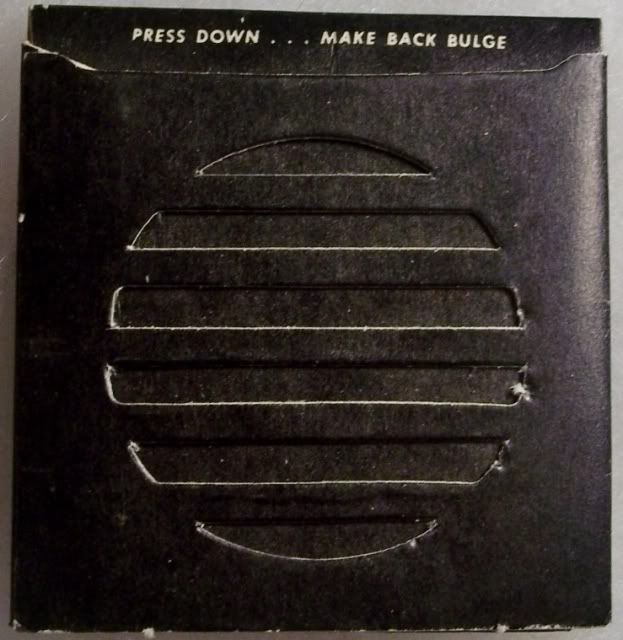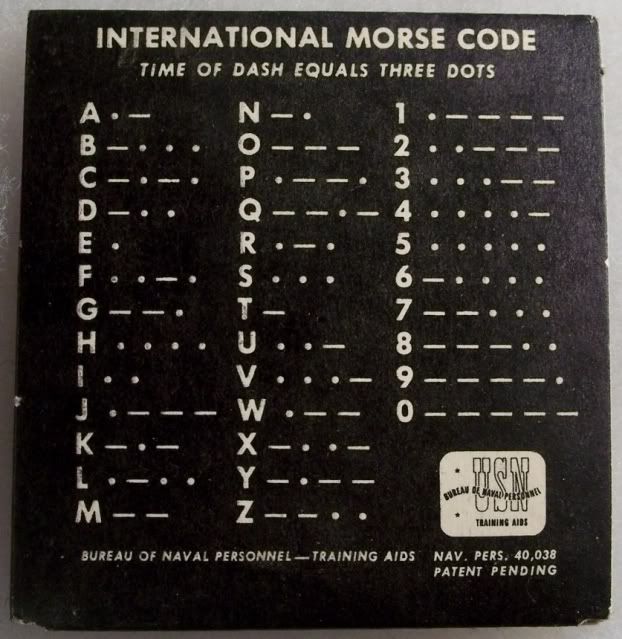

Posted on 05/11/2015 2:31:29 PM PDT by SandRat
Fort Huachuca, Arizona – It’s the beginning of the end of an era at Fort Huachuca. On April 27, National Morse Code Day, the last Manual Morse Code class begins here. In the future, the course will be taught by the Air Force at Goodfellow Air Force Base, Texas.
National Morse Code Day is celebrated on what would have been Morse’s 224th birthday. On May 24, 1844, Samuel F. B. Morse dispatched the first telegraph message in Morse code, the message, “What Hath God Wrought?” sent from the U.S. Capitol to Alfred Vail at a railroad station in Baltimore, Maryland.
The military first used Morse code during the Crimean War. Both the Union and Confederate armies heavily relied on Morse code during the Civil War. President Abraham Lincoln utilized it to get military intelligence as well as command and control of his generals in the field.
Even in our increasingly high-tech world, there is still a need for this old school mode of communication, explained David Germain, chief of Morse Code Training and sole remaining civilian Morse code instructor at the 304th Military Intelligence Battalion. “We train Morse code because the adversary still uses Morse code,” Germain said. He and the other instructor for the course, Air Force Tech. Sgt. Joshua Henrichs, are training two airmen to serve as Morse code instructors at the new course in Texas.
Air Force Tech Sgt. Ryan Kilcrease agrees there is a continued need for Morse code training. “It remains the cheapest and most reliable means of communication,” added the instructor-in-training.
Senior Airman James Gosnell, also training to become a new instructor, learned Morse code at Fort Huachuca and upon completion of his training was assigned to Osan Air Force Base in South Korea for two years. He said the assignment was challenging.
“It took me nearly two months to get up to speed learning to keep up with some of the fastest transmitters in the world,” he said.
The Army, in a memo signed April 5, 1985, became the executive agency for training the Morse Code Course at Fort Devens, Massachusetts. A few years later, Fort Devens consolidated the Morse code training into a joint learning environment providing training to Army, Navy, Marines and Air Force. In 1993, the Morse code course moved to Fort Huachuca where it continued to be trained in a joint environment. The Army celebrated 30 years of being the Executive Agency to conduct Morse Code Training on April 5.
Over the years, the Navy and Marines reversed the training pipeline and started to send their students to Pensacola then to Fort Huachuca to attend the Morse code training. In 2006, the Air Force followed suit.
In late 2004, early 2005 the Department of Defense sent out a message stating there was no longer a need or requirement for operators trained in only Morse code. Based on that message, the Navy no longer sent their students to Fort Huachuca to be trained, deciding instead to conduct their own training in Pensacola, Florida. By 2007, the Marines also stopped attending Morse code training at Fort Huachuca.
That same year the training consolidated two separate courses, the Basic Morse Training course and the Advanced Morse Training course from 22 weeks of training down to 16 weeks of training. The cut in training time for the Army was due to the course not being considered as a primary Military Occupation Specialty, but as a secondary training for three Army specialties. In 1991, the course trained on average 1600 students annually for all the military services.
The current Morse code course is self-paced and 81 days are allotted to complete it. A student successfully completed it in a record 27 days. Master Sgt. Adella Creque, superintendent, 316th Training Squadron here, says the course is hard to because a student has to master one segment before moving on to the next and may fail several times before advancing.
In 2012 the Army stopped enrolling students in the Morse Code Course since it no longer has a requirement to train Soldiers. A cooperative agreement between the Air Force and Army allowed the training to continue here at Fort Huachuca until now.
“I think [Morse code] will always be out there. It’s cheap, easy, effective and reliable to use. There will always be a need for it,” said Germain about the future need for Morse code.
Went to Radioman “A” school in the Navy back in 1969 at the now defunct Naval Training Center in San Diego. Learned CW (Morse Code) and got to the fleet and never used it! Can still remember some of the letters!
Ping
Sad. How will anyone know what they’re saying at the beginning of RKO Radio Pictures?
Pet peeve! That's someTHING of a revival.
-.. .- .-. -.


LOL!!
So the military will not be able to interpret a code used by American civilians like a second language? Won’t be the case, most patriotic military will take it upon themselves to master this basic survival tool.
I joined the Navy in 1988, and was sent to cyptologic technican, techanical school at NTTC Corry Station, Pensacola, FL. I arrived in January of 1989, after boot camp, and went on to learn morse code there. I then did the advanced operator course, and got multiple NEC’s from both “A” school and “C” school there.
I remember some of it, but some of it is forgotten in the mists of history.

THAT's IT! I've been looking all over for an example of it.
Where did you find it?
I Googled “navy morse trainer” and there it was.
But I cheated a bit. I own one of these neat little gadgets, so I knew what I was looking for!
We are so screwed.
sorry, ‘something of a revival’. I’m normally big on grammar myself, but was typing that pretty quick, and missed it. Thanks for the note.
It’s been around a long time.
In “The Gay Divorcee” (1934), Fred Astaire says, “You’re somewhat of an igneous intrusion, yourself.”
Fortunately, it comes in the final scene, so it doesn’t ruin the whole movie.
Disclaimer: Opinions posted on Free Republic are those of the individual posters and do not necessarily represent the opinion of Free Republic or its management. All materials posted herein are protected by copyright law and the exemption for fair use of copyrighted works.